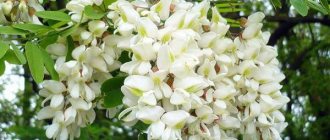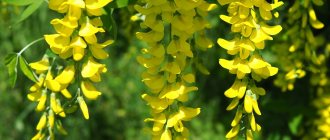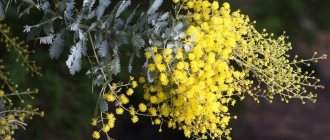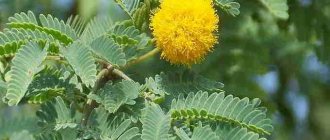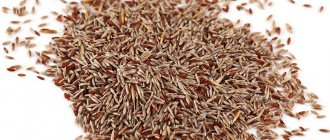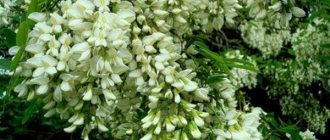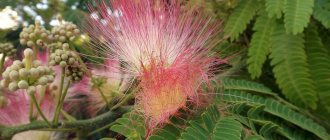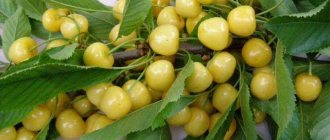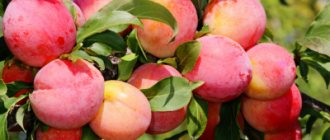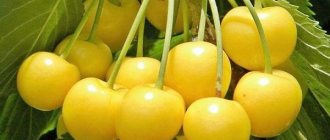Mimosa bashful - can you keep it at home: signs
This plant is not recommended to be grown at home. Despite its beauty and unusualness, the culture releases toxic substances that contribute to human hair loss. There are also a lot of signs around this plant. The culture is thought to keep men away. If you have this plant at home, it is very difficult to find your soulmate.
The most interesting thing is that the culture has an excellent defense mechanism. The roots and stems contain toxic substances that are released when the root system is damaged. Very often, animals on pastures can die from this plant. The juice of the crop is very poisonous.
Mimosa bashful
Acacia
Learned? Yes, yes, she is the heroine of the novel “The Master and Margarita”, and then the obligatory “Eight March” plant throughout the entire post-Soviet space. And it’s not a mimosa (even Bulgakov himself admitted that “the devil knows what it’s called”), it’s a real acacia.
Acacias are a genus of flowering plants in the same legume family, so they are really distant relatives of mimosa. And it also grows in the wild in hot countries, but in Europe it lives only in greenhouses and greenhouses. But acacia looks completely different.
“Mimosa” is our name for one popular type of acacia – silver or white acacia (Acacia dealbata). It comes from the southeastern coast of Australia and the island of Tasmania, although later the plant spread widely throughout the world and took root well in Africa, the western United States, and southern Europe. In Russia (on the Black Sea coast of the Caucasus) this species has existed in culture since 1852.
In its homeland, this is a huge evergreen fast-growing tree with a spreading crown more than 40 meters high; in other latitudes, acacias usually do not exceed 10-15 m. Young branches are olive-green, and the bark of adult shoots and trunk is brown-gray, with a large number of shallow cracks, from of which gum often appears.
Silver acacia is named for the light gray-green coating that covers the branches and double-pinnate leaves. And on the upper side of the main vein of the leaf at the base there are round glands that secrete honey liquid during flowering.
Acacia blooms already in mid-late February - it is thanks to this seasonality that it has become so popular with us as a present for Women's Day, for which purpose its pruned shoots are massively transported to big cities from the southern regions. Moreover, in hot countries, a wild and winter-hardy tree can bloom from the end of January until mid-April!
You can all imagine its flowers perfectly well - they are very small, yellow, fragrant, collected 20-30 pieces into spherical heads with a diameter of 4-8 mm, and the heads, in turn, are collected into racemes, and those into panicles. The main “dignity” of these flowers is the numerous golden stamens with long yellow or orange threads protruding far from the corolla.
Fresh, recently cut silver acacia flowers have a bright, recognizable aroma. If you bought elegant, but absolutely odorous twigs, most likely, you were deceived by nosy sellers by dousing them with boiling water. Such a gift, alas, will not last in a vase for more than a day.
Acacia bears fruit in August-September - flat, oblong, purple-brown beans with small, very hard, shiny seeds ripen on the tree.
A solution of acacia gum is used in medicine for inflammatory problems of the gastrointestinal tract, a decoction of the bark of this plant is also a folk remedy, and a fragrant essential oil is isolated from the flowers, which is actively used in the perfume industry.
How to plant or transplant an indoor flower Mimosa pudica into a pot: tips, description of technology
Most often the plant is grown as an annual. After all, closer to autumn, the plant stretches out and the bushes become less lush. This is actually why plants that are grown as perennials are replanted in the spring. To do this, use any soil for beautifully flowering plants. But you can prepare the soil yourself.
Soil composition:
- Peat (1 part)
- Clay-turf soil (2 parts)
- Deciduous soil (1 part)
- Sand (1/2 part)
Mimosa bashful
Propagation by seeds and cuttings
The easiest way to propagate bashful mimosa is to use seeds. This method is a little troublesome, but it gives excellent results.
Note: Propagation by cuttings is easier, but their survival rate is very low (one out of ten), even if it is possible to prune the plant so that the planting material is of high quality. Therefore, this method has long been abandoned by both amateurs and professionals.
Seed material can be purchased at the store or collected independently. After pollination, the plant sets a fruit, which is a pod filled with beans. Ripe dry spatulas are collected, wrapped in paper and stored in the refrigerator at a temperature of about +5 degrees. Seeds are planted in the first half of spring, after soaking them in hot water for half an hour to improve germination. After this, the planting material is dried and planting begins in loose nutrient soil with sufficient peat content. To disinfect it, it is watered with phytosporin or a weak solution of potassium permanganate.
The culture is propagated by seeds very simply. They are deepened into the prepared moist soil by 1 cm, the soil is not compacted. The container itself is covered with glass or plastic film and placed in a warm (+24+26) lighted place. A slight decrease in temperature is allowed, but not lower than 20 degrees (Figure 5).
Figure 5. The plant is easiest to grow from seeds.
The cover is periodically removed to moisten the soil with a sprayer and ventilate. Under the right conditions, the first shoots appear at the end of the first week. After two true leaves appear, the seedlings are planted in separate containers (2-3 seedlings in one cup). For planting, a nutrient substrate is used, consisting of turf and leaf soil, as well as sand, taken in equal parts. The final transplant into a large pot (11 cm in diameter) is carried out only when the roots completely fill the glass.
Mimosa pudica - growing from seeds, care: tips, description of technology
In general, the plant is a perennial, but many gardeners do not like that during the winter the stem of the plant becomes very elongated and becomes not very attractive. Therefore, flower growers recommend sowing the plant every year. To obtain seeds during the flowering period, touch one flower to another and wait for the pods to appear. Wait until they are completely dry and place them on the refrigerator door. There the seeds must spend their time until spring. Sow seeds in March or April.
Instructions:
- Moisten the peat soil and loosen it well
- Soak the seeds for 30 minutes in warm water
- Immerse the seeds 0.5-1.0 cm into the soil and moisten slightly
- Cover the pot with glass or film and place it in a bright place
- In 5-7 days the first shoots will appear
- When the sprout reaches a height of 5 cm, it is transplanted into plastic cups or small pots
Care:
- The plant requires watering with soft water. Water frequently in summer
- In summer, the room temperature should be 23-25 degrees. In winter it is reduced to 16 degrees
- Water every 3 days in winter. The leaves are not sprayed, but humidified. To do this, place saucers of water on the windowsill.
- You can also spray the air from a spray bottle
- Fertilize in the spring. Also, if the plant is grown as a perennial, it is cut to remove the elongated stem
- The plant wilts from tobacco smoke. Therefore, it should not be grown where people smoke
Growing mimosa at home
Air temperature and humidity
Caring for bashful mimosa at home involves regular watering and maintaining optimal air humidity. Only if these recommendations are followed will the plant fully develop and bloom.
The most comfortable temperature for shy mimosa is from +20 to +24 degrees. In winter, it should be +16-18 degrees. Equally important is the level of humidity. Since the plant comes from the tropics, its indicators should not fall below 70%. At home, this can be achieved by spraying the air around the plant with a fine sprayer.
Droplets of water will fall on the mimosa leaves, simulating dew. Installing a container of water in the room, or placing a pot of mimosa in a tray filled with wet expanded clay so that the bottom of the pot is not immersed in water, will help increase air humidity. These events play a particularly important role during periods of active cultural growth.
How to prune mimosa pudica?
To prevent the plant from stretching and producing more new shoots, regularly pinch the tops of the main branches. The first pinching is carried out in early April. Mimosa flowers appear on young shoots, so the more there are, the longer the flowering period. Just don’t overdo it, pinch only the most elongated branches.
Re-pinch after the plant has finished flowering so that the plant can produce not one but two shoots by next season. It is not recommended to severely prune the plant, otherwise the mimosa may die. It is better, if necessary, to place a wooden support and carefully tie it by the trunk. During the dormant period, the flower is not pinched.
If your plant is perennial, then in March the entire stem is cut off almost completely. Only 10 cm is left.
Pruning mimosa pudica
Description
Bashful belongs to plants of the genus Mimosa (legume family). South America is considered the plant's homeland, although currently it can be found in nature in the tropics of Asia and Africa. People call it “sissy” or “shy mimosa.”
Mimosa pudica is a herbaceous shrub. Under natural conditions it grows up to one and a half meters. In an apartment, the height of the plant reaches 30-60 centimeters. The stem of the plant is straight, from which bipinnate leaves emerge on long cuttings, in groups of three to five pieces. There are small thorns on the trunk, and the entire plant is covered with whitish hairs.
The shy mimosa blooms throughout the summer. Pinkish-purple flowers are collected in spherical inflorescences and are located at the ends of young shoots. The diameter of the flower “heads” is about two centimeters. In nature, flowers are pollinated by the wind and insects. To obtain seeds when growing indoors, artificial pollination is necessary. If everything is done correctly, then over time the flower begins to droop and the stem thickens. The pod contains two to ten seeds. Dried pods are stored in the refrigerator until spring, placed in a paper bag. The best place is a shelf on the refrigerator door. In spring, seeds are planted to create a new plant.
Peculiarities
Mimosa pudica is notable for its ability to respond to touch. As soon as you touch its leaves with your hand, they curl up and press against the trunk. After twenty to thirty minutes, if the plant is not disturbed, the leaves will return to their previous shape. This is where the name came from - bashful mimosa.
But scientists back in the eighteenth century noticed that the movement of plant leaves depends on the following factors:
- depending on the time of day;
- from external irritants.
At night, the leaves are folded, regardless of whether there is a light source or not. This feature of the flower was discovered by astronomer Jean-Jacques de Meiran (Meran) from France. He placed the plant in a room without light, but the leaves dropped only after dark. He explained this by the fact that the rhythms of leaf movement are similar to the rhythms of human sleep. Such rhythms are called circadian and are of endogenous origin. Also, mimosa leaves droop under gusts of wind when shaking. The plant can fold its leaves along the central vein, or it can lower the leaf towards the stem.
This may be interesting: How to overcome the difficulties of caring for Poliscias
The ability of mimosa to fold leaves has the following explanation. When the leaf is touched, chemicals are released from the cells. This leads to a decrease in the amount of water in the cells and, accordingly, folding of the leaves. In apartment conditions, frequent curling of leaves in response to touch leads to a large expenditure of the plant’s internal forces and exhaustion.
As a result, the mimosa begins to fade and may die. Therefore, having planted mimosa pudica at home, you should not disturb it often. In addition, the plant is very sensitive to tobacco smoke, which causes it to die.
The plant's pollen can cause allergies, and its leaves are poisonous if ingested. Therefore, we recommend placing the bashful mimosa in a place inaccessible to small children and pets.
Mimosa pudica: why do the leaves curl and shed leaves?
In general, this plant is called impatiens. After all, after contact, the leaves fold towards the main vein or roll up into a tube. After 20 minutes, in the absence of the stimulus, the leaves again assume their normal position.
Scientists know the mechanism of leaf folding. At the base of the cuttings there are water sacs filled with water. When exposed to leaves, this moisture rushes towards them and they become heavy, and that is why they fold.
There is also information about the presence of “intelligence” in the plant. That is, it gets used to mechanical influences of a certain kind and no longer reacts to them if there is no danger. But in fact, you shouldn’t touch the plant often, as this contributes to its rapid withering. Energy resources are running out.
Mimosa leaves
If a mimosa has dropped its leaves, this may indicate drafts or tobacco smoke. The plant reacts to it very quickly.
Growing problems, diseases and pests
Like all indoor crops, mimosas are susceptible to disease or pest invasion. If you do not follow the rules of care, the flower may get sick. Spider mites and aphids can harm the shy impatiens. They can be seen upon visual inspection of the bush.
Note! Lack of water may cause leaves to dry out and fall off.
Mimosa impatiens in a pot
